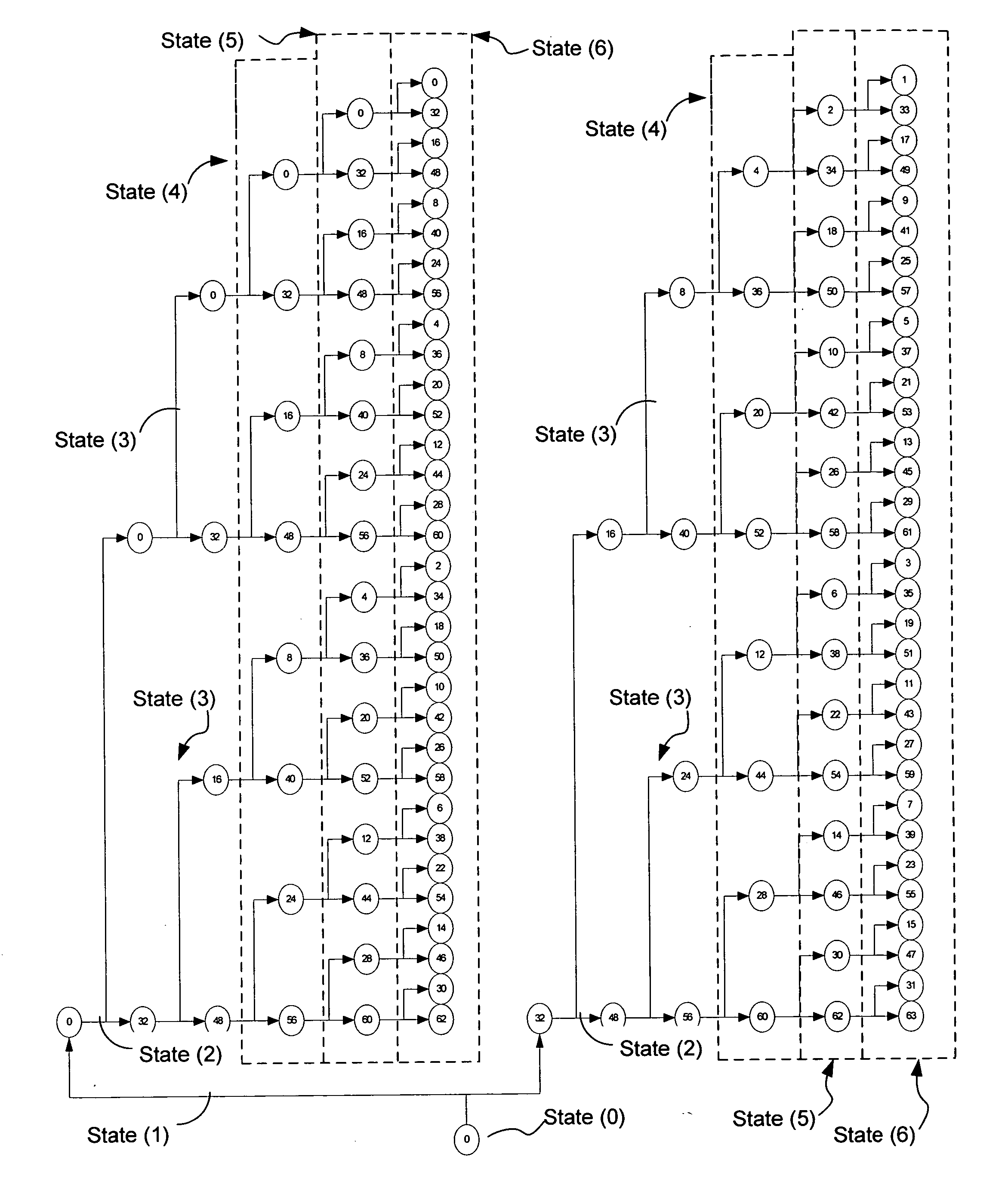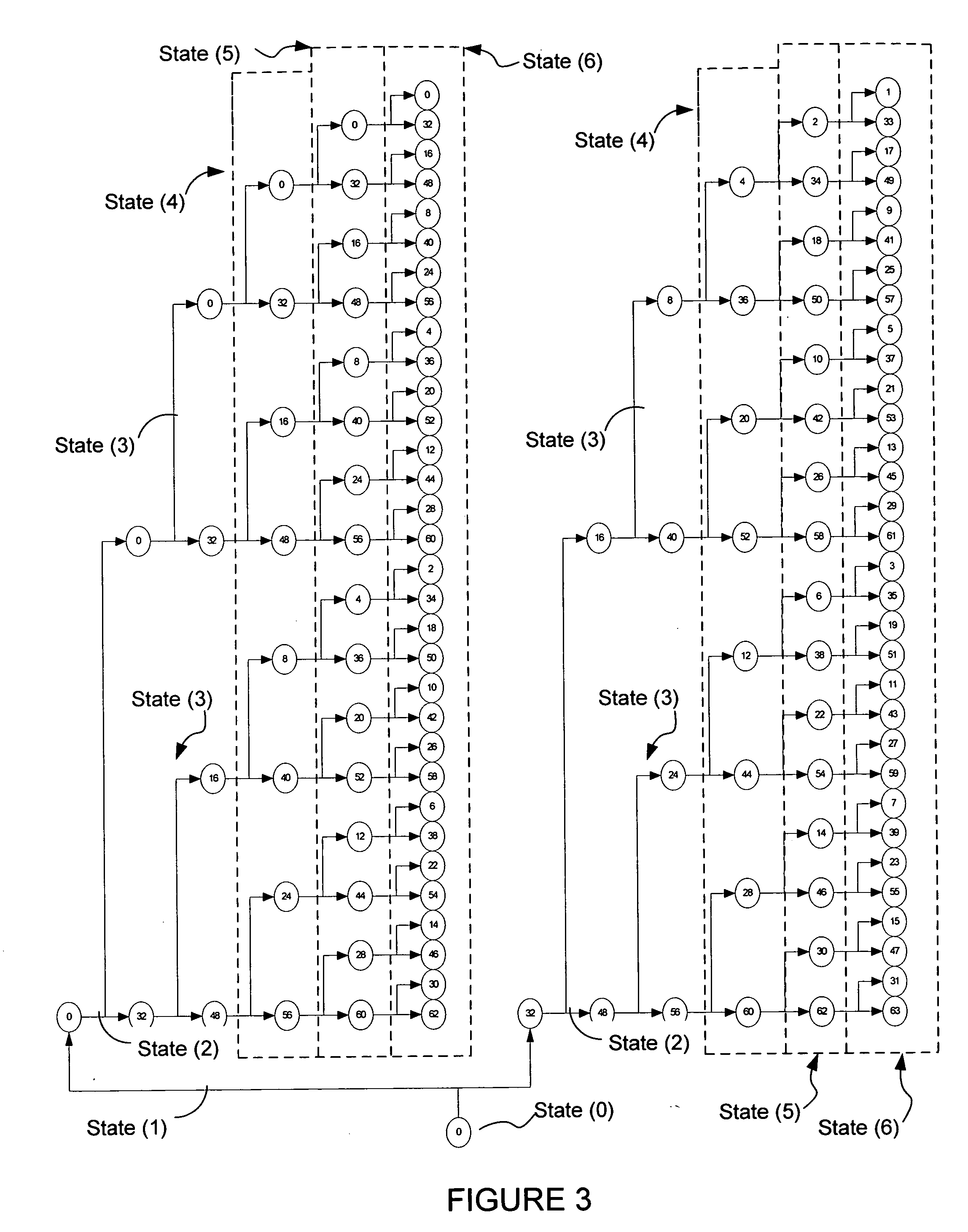Viterbi decoder with survivor bits stored to support look-ahead addressing
a look-ahead address and decoder technology, applied in the field of decoding convolutional errors using the maximumlikelihood decoding algorithm, can solve the problems of hardware delay, stall, dropout or interruption of the trace-back process, and large number of computations in the trace-back process, so as to improve the throughput rate of the viterbi decoder, eliminate the possibility of stall or delay, and high-performance communication system
- Summary
- Abstract
- Description
- Claims
- Application Information
AI Technical Summary
Benefits of technology
Problems solved by technology
Method used
Image
Examples
Embodiment Construction
[0013] In accordance with an embodiment of the present invention, an error correcting system and method for decoding convolutional codes. More specifically, an efficient and novel method is disclosed for decoding convolutionally encoded data using a maximum-likelihood decoding algorithm. In one preferred embodiment, received encoded data is decoded by a Viterbi decoder that incorporates a pipelined architecture to improve the throughput rate of a Viterbi decoder. Advantageously, the decoder is not susceptible to stalls, delays, dropouts or interruption in delivering the decoded received data stream to the user. The present invention provides a simple yet elegant solution to implementing a pipelined trace-back solution for a Viterbi decoder that not only eliminates possibility of stalls or delays but that also overcomes hardware limitations while providing a high performance communication system.
[0014] The present invention uses the trace-back process to recover the input sequence f...
PUM
 Login to View More
Login to View More Abstract
Description
Claims
Application Information
 Login to View More
Login to View More - R&D
- Intellectual Property
- Life Sciences
- Materials
- Tech Scout
- Unparalleled Data Quality
- Higher Quality Content
- 60% Fewer Hallucinations
Browse by: Latest US Patents, China's latest patents, Technical Efficacy Thesaurus, Application Domain, Technology Topic, Popular Technical Reports.
© 2025 PatSnap. All rights reserved.Legal|Privacy policy|Modern Slavery Act Transparency Statement|Sitemap|About US| Contact US: help@patsnap.com



